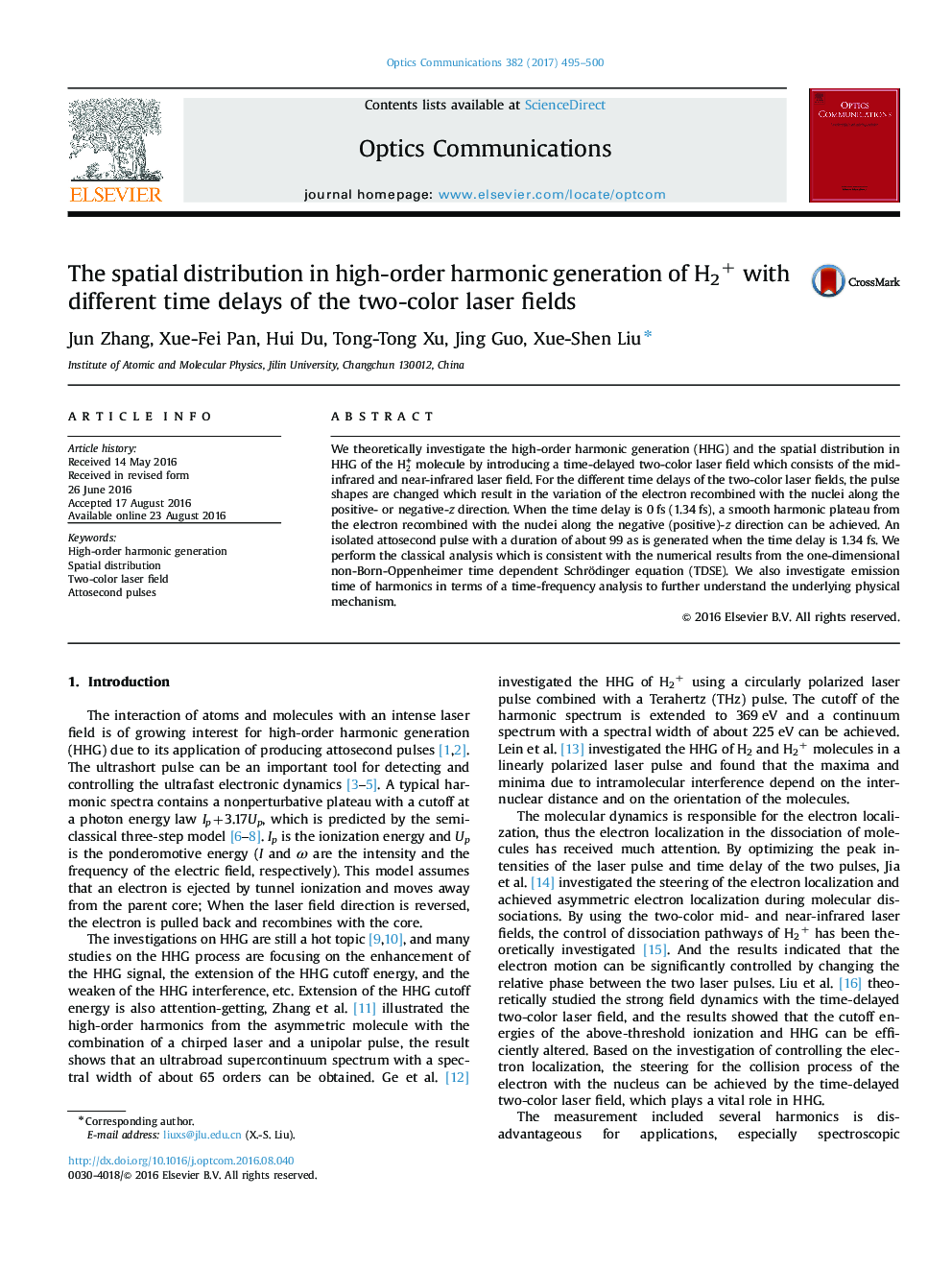| Article ID | Journal | Published Year | Pages | File Type |
|---|---|---|---|---|
| 7927497 | Optics Communications | 2017 | 6 Pages |
Abstract
We theoretically investigate the high-order harmonic generation (HHG) and the spatial distribution in HHG of the H2+ molecule by introducing a time-delayed two-color laser field which consists of the mid-infrared and near-infrared laser field. For the different time delays of the two-color laser fields, the pulse shapes are changed which result in the variation of the electron recombined with the nuclei along the positive- or negative-z direction. When the time delay is 0Â fs (1.34Â fs), a smooth harmonic plateau from the electron recombined with the nuclei along the negative (positive)-z direction can be achieved. An isolated attosecond pulse with a duration of about 99 as is generated when the time delay is 1.34Â fs. We perform the classical analysis which is consistent with the numerical results from the one-dimensional non-Born-Oppenheimer time dependent Schrödinger equation (TDSE). We also investigate emission time of harmonics in terms of a time-frequency analysis to further understand the underlying physical mechanism.
Related Topics
Physical Sciences and Engineering
Materials Science
Electronic, Optical and Magnetic Materials
Authors
Jun Zhang, Xue-Fei Pan, Hui Du, Tong-Tong Xu, Jing Guo, Xue-Shen Liu,
